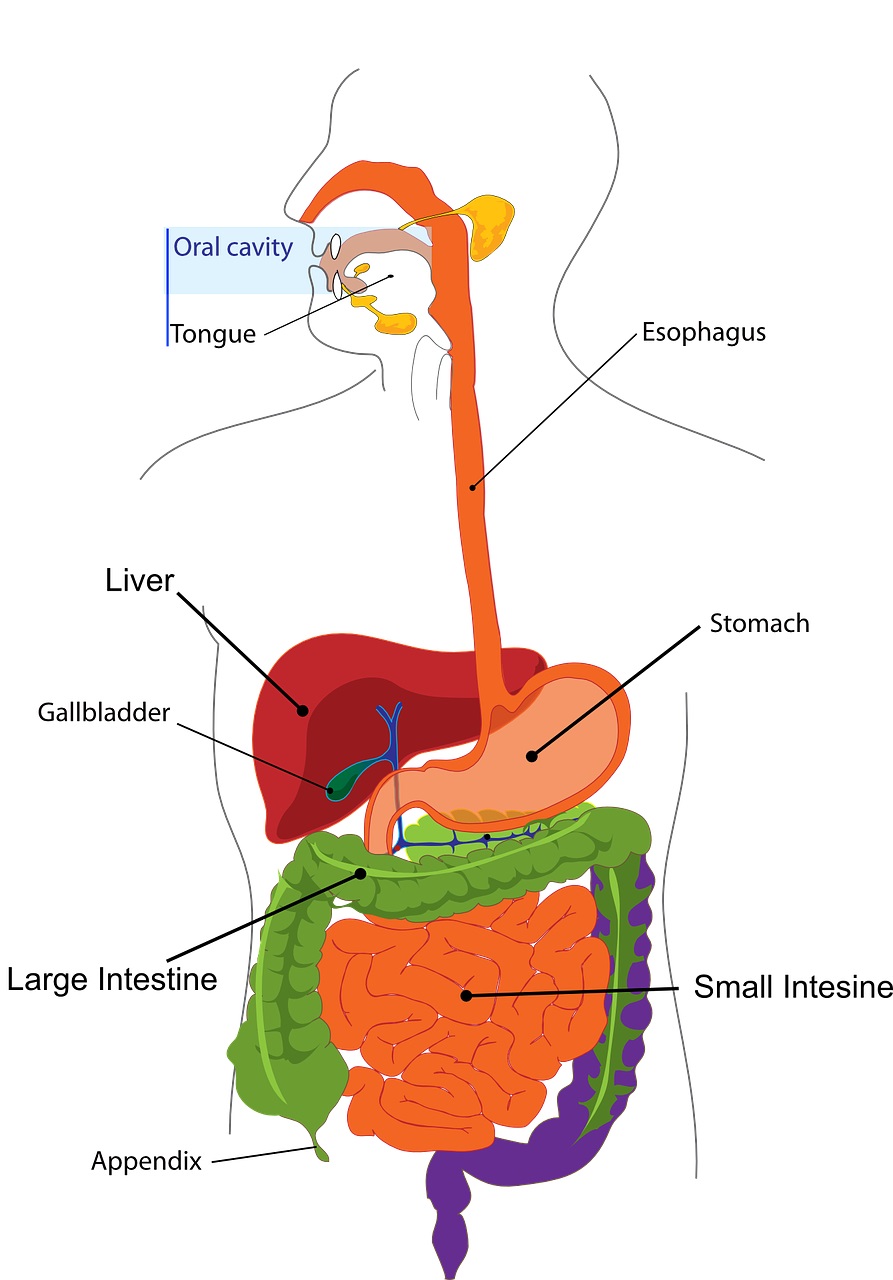Our digestive system is an amazing 26 foot length work of art. Its talent includes taking the food we eat, breaking down and extracting the components of various nutrients, fiber, and calories that help to nourish and keep us alive. This work of the digestive system comprises the two main functions this irreplaceable system has – one, to convert food into nutrients your body needs and two, to rid the body of waste.
The entire system begins in the mouth, and includes the esophagus, stomach, liver, gallbladder, pancreas, the small and large intestines, the rectum, and ends at the anus. In order for the digestive system to operate smoothly, it requires all of these organs to be involved in the process whenever we ingest food.
Here are some basic facts about your digestive system that you may not have known about:
- The food we eat does not require gravity to move it along the digestive tract
Once you have chewed up and swallowed your food, the esophagus comes into action by using its muscles to constrict and relax in wavelike motion called peristalsis, pushing the food towards the stomach. You don’t have to be upright in order for food to be moved along the digestive system – even if you are lying down or were hanging upside down, peristalsis would still work.
Another interesting fact is that it takes approximately seven seconds for food to travel through the esophagus and to reach the stomach.
- Your stomach only plays a small role in digesting our food
We tend to have the notion that digestion primarily occurs in the stomach but this is not true. The stomach does help churn and mix up the food we’ve eaten with gastric juices, breaking up the food into smaller and smaller pieces. But the main site of digestion occurs in the small intestine. The small intestine makes up two-thirds of the length of the digestive tract and it is the main site where most digestion and absorption of nutrients occur. The food coming from the stomach into the small intestine will have the nutrients absorbed through the walls of the small intestine where they are passed into the bloodstream.
- The surface area of the small intestine is enormous
Even though the small intestine is about 22 feet in length (the large intestine is about 5 feet in length) and about an inch in diameter, you would think that the surface area to be about 6 square feet. Take another guess – the surface area is actually about 2,700 square feet or about the size of a tennis court.
The reason? The small intestine has three features which contribute to such an enormous surface area – there is the wall of the small intestine which is composed of thousands of folds (think of a Shar Pei dog), these folds are covered with villi which are fingerlike projections of absorptive tissue (think of a shag rug), and every single villi is covered in tiny hairlike projections called microvilli.
- The smell of flatulence comes from bacteria
All of us have flatulence or intestinal gas thanks to bacteria. Flatulence is a combination of swallowed air and the gasses produced by the fermentation of bacteria in the gastrointestinal tract. There are certain foods the digestive system is unable to break down completely so those foods get pushed along the tract where they eventually enter the large intestine. Living in the large intestine are good bacteria which love to work on the undigested food particles. But in the process, a variety of gases, including carbon dioxide, hydrogen, methane, and hydrogen sulfide are produced and eventually released.
- The stomach would digest itself if it wasn’t for this one substance
Each day, the cells lining the inner wall of the stomach secrete about 2 liters or 0.5 gallons of hydrochloric acid. This is necessary to kill bacteria and to aid in breaking food down to be digested. Hydrochloric acid is very strong stuff. So strong that this powerful chemical is what is commonly used to remove rust and scale from steel sheets and coils and can be found in some cleaning supplies such as toilet-bowl cleaners.
Because of the strong acidity of hydrochloric acid, the stomach must protect itself from being digested. To protect itself, the stomach lining is covered in a thick coating of mucus. Because the mucus cannot buffer the digestive juices indefinitely, the stomach produces a new coat of mucus every two weeks.
- Typical digestive system transit time of our food over the course of 24-hours
The process of turning our food into nutrients and absorbing them into the body is remarkably efficient. Within about 24 to 48 hours, a healthy body digests and absorbs about 90 percent of the carbohydrate, fat, and protein in a meal.
The typical transit time of how long our food spends in the different areas of the digestive system is as follows:
- Time in the mouth – less than one minute
- Time in the stomach – about 1-2 hours
- Time in the small intestine – About 7-8 hours
Photo credit: pixabay.com





This was such an interesting read! The digestive system is truly incredible, and it’s amazing how much it affects our overall health. Supporting gut balance with probiotics for gut health can make a big difference in digestion and well-being. Thanks for sharing these fascinating facts!